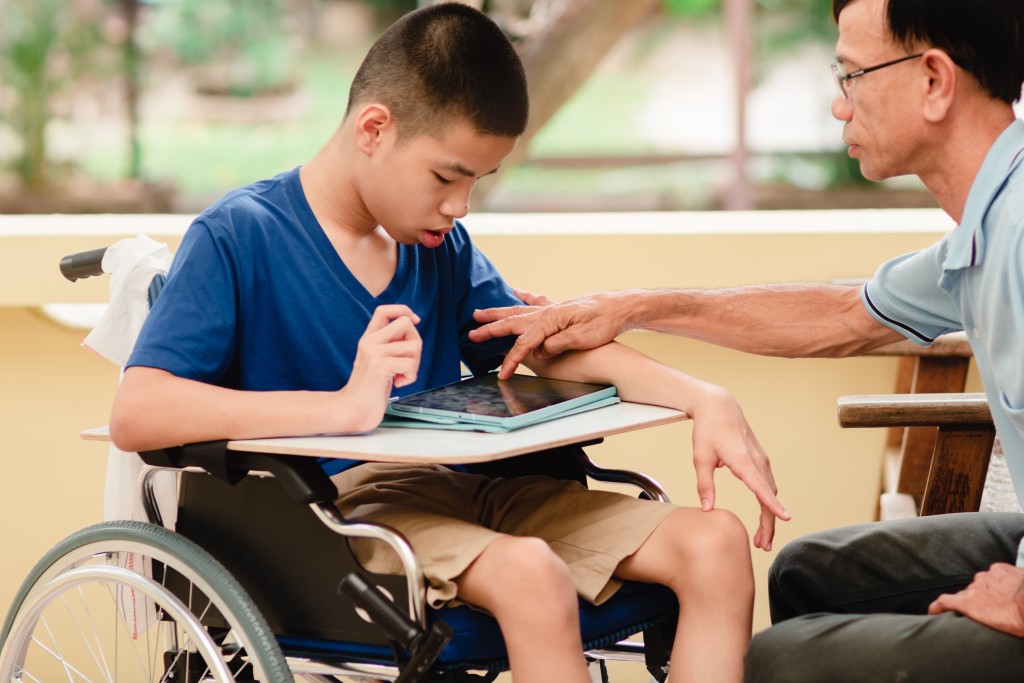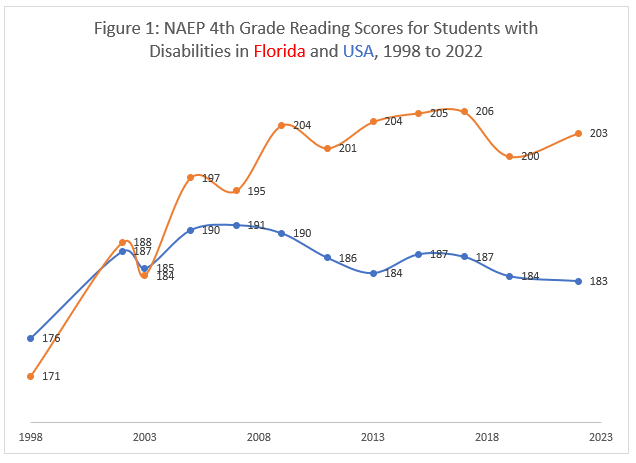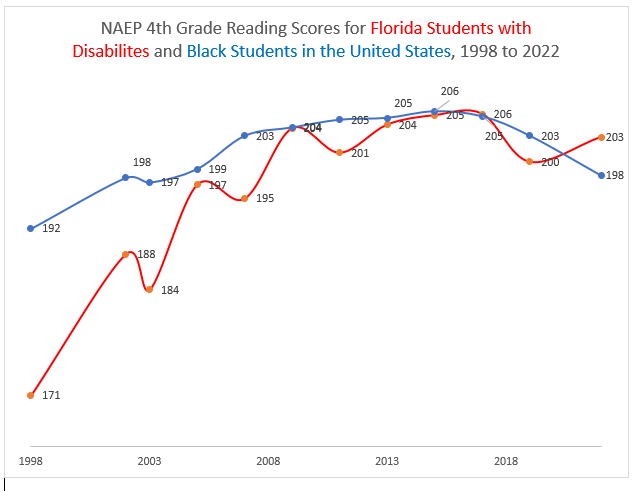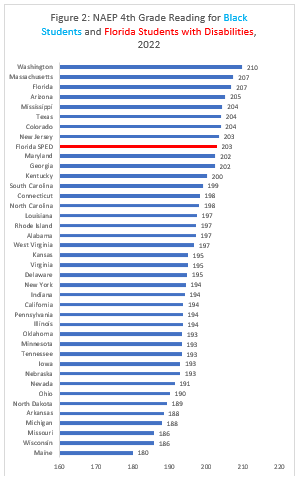 Education choice critics often claim that choice will harm students remaining in public schools. Florida students with disabilities have had fully funded access to private choice programs on a statewide basis since 2001, and to charter schools since 1996. Florida’s students with disabilities have thus had much greater access to choice over a longer period of time than most student populations.
Education choice critics often claim that choice will harm students remaining in public schools. Florida students with disabilities have had fully funded access to private choice programs on a statewide basis since 2001, and to charter schools since 1996. Florida’s students with disabilities have thus had much greater access to choice over a longer period of time than most student populations.
As demonstrated below, Florida’s students with disabilities have made sufficient academic progress to overtake not only students with disabilities nationally, but other national subgroups, and indeed the averages for all students in multiple urban districts and a handful of statewide averages.
Florida lawmakers created the nation’s first choice program for students with disabilities in 1999 – the McKay Scholarship program – which went statewide in 2001. This program was formula-funded and available to any student with an Individual Education Plan. Florida also was an early adopter of charter schools and has one of the nation’s largest charter school sectors.
In 2015, the state created the nation’s second education savings account program for students with disabilities. Florida also launched a thorough effort to improve early literacy for all students during the same period.
The results have been impressive. In 2022, Florida fourth graders with disabilities demonstrated a level of literacy approximately three grade levels higher than their peers in 1998.

As previously noted, Florida instituted a suite of education reforms in 1999, and we cannot be certain with regards to cause and effect. Florida, for instance, was an early and aggressive adopter of the science of literacy as well as school choice.
Florida’s progress for students with disabilities has not been limited to reading, and if the theory is that choice harms student outcomes, Florida’s students with disabilities make for as good a test as any.
It’s also possible that Florida students with disabilities exiting the public-school system through private choice programs increased public school averages. To do so at scale, the average academic performance of those exiting would need to be unusually low compared to those remaining in the public-school system, and the participation rate relatively high.
The participation rate in Florida’s choice programs of students with disabilities averaged below 10% of eligible students for the period covered. While there is a large academic literature demonstrating positive competitive effects from choice programs on public school outcomes, academic selection bias seems unlikely to have had a large impact on statewide scores.
When examining Figure 1, note that the 1998 to 2003 progress in Florida was sufficient to push and keep Florida’s scores for students with disabilities above the national average. Unlike the national trend, Florida’s scores continued to improve while those nationally stagnated and declined.
Nationally, Black students have had far less access to K-12 choice than Florida’s students with disabilities. Only a small minority of Black students have access to private choice programs, with greater access to charter schools. The supply of charter school seats, however, varies widely by state, with many states having either few charter seats or long waitlists at charter schools. Florida’s students with disabilities have access to both an unusually large charter school sector and formula funded private choice programs.
Figure 2 compares the trend in fourth grade reading scores among Florida’s students with disabilities with that of Black students nationally.

Florida students with disabilities first tied the national average for Black students in 2009, effectively did it again in 2015 and 2017, and then put some distance between their scores in 2022. In 2022, only eight states had statewide averages for Black students higher than Florida’s statewide average for students with disabilities.

Florida’s average fourth grade reading score for students with disabilities not only exceeded the average score for all students in several of the large urban districts; it also exceeded the average score for all students in New Mexico – the lowest-performing state – in 2022.
Note that this trend is not limited to the NAEP fourth grade reading exam, nor to Black students. In 2022, Florida students with disabilities had fourth grade math scores equal to or greater than those for all students in three states, Alaska, West Virginia, and New Mexico.
On eighth grade reading, Florida students with disabilities matched or beat the average scores for all students in five NAEP Trial Urban District Assessments, Detroit, Cleveland, Milwaukee, Baltimore and Dallas). On eighth grade mathematics, Florida students with disabilities edged out the average for all students in Detroit.
We can draw multiple conclusions from these results, both positive and negative. Let’s hit the positive first.
Florida’s improvement in the scores of students with disabilities strikes yet another blow against education fatalism. Florida also improved outcomes for other student subgroups holding the short end of various achievement gap sticks. Bravo Florida.
On the negative side, student warehousing seems alive and well around the country. The National Institute of Health defines a learning disability as “disorders that affect the ability to understand or use spoken or written language, do mathematical calculations, coordinate movements, or direct attention.”
Neither a student’s skin color, nor living in New Mexico, nor attending school in a large urban school district remotely qualifies as a learning disability. NAEP scores should reflect that.
It lies beyond the power of your humble author to prove that access to choice programs helped drive the extraordinary gain in achievement among Florida students with disabilities detailed above. You’ll have to decide for yourself whether it is likely that these gains happened in spite of an unusually high choice exposure.
Color me skeptical.